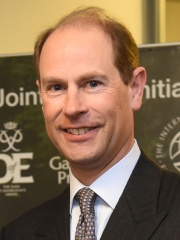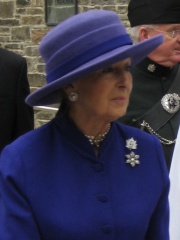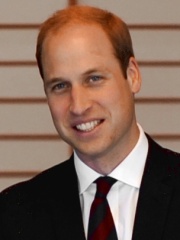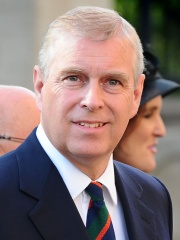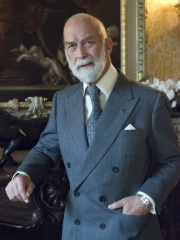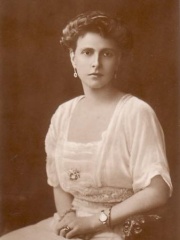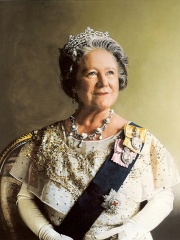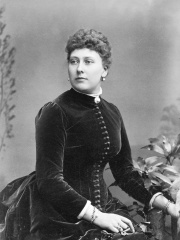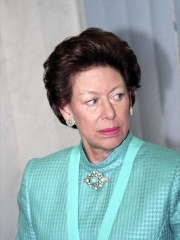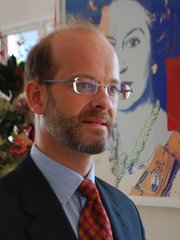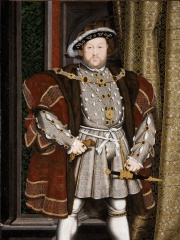
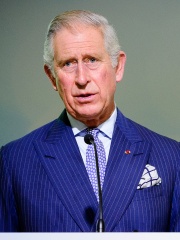
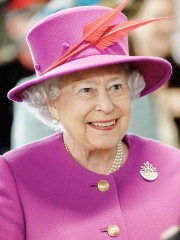
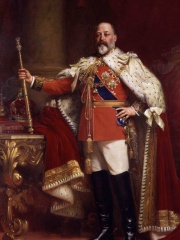
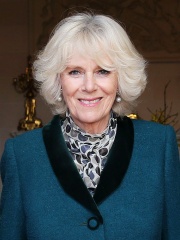
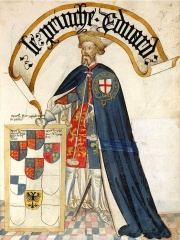
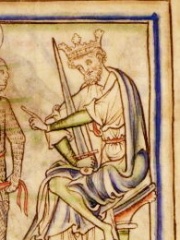
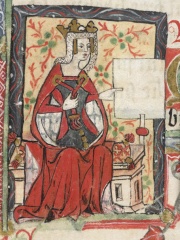
The Most Famous
NOBLEMEN from United Kingdom
This page contains a list of the greatest British Noblemen. The pantheon dataset contains 1,415 Noblemen, 93 of which were born in United Kingdom. This makes United Kingdom the birth place of the 4th most number of Noblemen behind France, and Italy.
Top 10
The following people are considered by Pantheon to be the top 10 most legendary British Noblemen of all time. This list of famous British Noblemen is sorted by HPI (Historical Popularity Index), a metric that aggregates information on a biography's online popularity. Visit the rankings page to view the entire list of British Noblemen.

1. Henry VIII of England (1491 - 1547)
With an HPI of 94.65, Henry VIII of England is the most famous British Nobleman. His biography has been translated into 106 different languages on wikipedia.
Henry VIII (28 June 1491 – 28 January 1547) was King of England from 22 April 1509 until his death in 1547. Henry was a dominant and forceful monarch. He is known for his six marriages and his efforts to have his first marriage, to Catherine of Aragon, annulled. His disagreement with Pope Clement VII about such an annulment led Henry to initiate the English Reformation, separating the Church of England from papal authority. He appointed himself Supreme Head of the Church of England and dissolved convents and monasteries, for which he was excommunicated by the pope. Born in Greenwich, Henry brought radical changes to the Constitution of England, expanding royal power and ushering in the theory of the divine right of kings in opposition to papal supremacy. He frequently used charges of treason and heresy to quell dissent, and those accused were often executed without a formal trial using bills of attainder. He achieved many of his political aims through his chief ministers, some of whom were banished or executed when they fell out of his favour. Thomas Wolsey, Thomas More, Thomas Cromwell, and Thomas Cranmer all figured prominently in his administration. Henry was an extravagant spender, using proceeds from the dissolution of the monasteries and acts of the Reformation Parliament. He converted money that was formerly paid to Rome into royal revenue. Despite the money from these sources, he was often on the verge of financial ruin due to personal extravagance and costly and largely unproductive wars, particularly with King Francis I of France, Charles V, Holy Roman Emperor, King James V of Scotland, and the Scottish regency under the Earl of Arran and Mary of Guise. He founded the Royal Navy, oversaw the annexation of Wales to England with the Laws in Wales Acts 1535 and 1542, and was the first English monarch to rule as King of Ireland following the Crown of Ireland Act 1542. Henry's contemporaries considered him an attractive, educated, and accomplished king. He has been described as "one of the most charismatic rulers to sit on the English throne" and his reign described as the "most important" in English history. He was an author and composer. As he aged, he became severely overweight and his health suffered, and was frequently characterised in his later life as a lustful, egotistical, paranoid, and tyrannical monarch. His third marriage to Jane Seymour did finally produce the son and heir he longed for and he was succeeded by Edward VI. Nonetheless, his daughters by his first and second wives, Mary, and then Elizabeth, later acceded to the throne in turn.

2. Charles, Prince of Wales (b. 1948)
With an HPI of 91.70, Charles, Prince of Wales is the 2nd most famous British Nobleman. His biography has been translated into 156 different languages.
Charles III (Charles Philip Arthur George; born 14 November 1948) is King of the United Kingdom and 14 other Commonwealth realms. Charles was born during the reign of his maternal grandfather, King George VI, and became heir apparent when his mother, Queen Elizabeth II, acceded to the throne in 1952. He was created Prince of Wales in 1958 and his investiture was held in 1969. Charles was educated at Cheam School and Gordonstoun, and later spent six months at the Timbertop campus of Geelong Grammar School in Victoria, Australia. After completing a history degree from the University of Cambridge, he served in the Royal Air Force and the Royal Navy from 1971 to 1976. He married Lady Diana Spencer in 1981 and they had two sons, William and Harry. Charles and Diana divorced in 1996 after years of estrangement and well-publicised extramarital affairs. Diana died the following year from injuries sustained in a car crash. In 2005, Charles married his long-time partner, Camilla Parker Bowles. As heir apparent, Charles undertook official duties and engagements on behalf of his mother and represented the United Kingdom on visits abroad. He founded the Prince's Trust in 1976, sponsored the Prince's Charities and became patron or president of more than 800 other charities and organisations. He advocated for the conservation of historic buildings and the importance of traditional architecture in society. In that vein, he generated the experimental new town of Poundbury. An environmentalist, Charles supported organic farming and action to prevent climate change during his time as the manager of the Duchy of Cornwall estates, earning him awards and recognition as well as criticism. He is also a prominent critic of the adoption of genetically modified food, while his support for alternative medicine has been criticised. He has authored or co-authored 17 books. Charles became king upon his mother's death in 2022. At the age of 73 he was the oldest person to accede to the British throne, after having been the longest-serving heir apparent and Prince of Wales in British history. Significant events in his reign have included his coronation in 2023 and his cancer diagnosis the following year, which temporarily suspended planned public engagements.

3. Elizabeth II (1926 - 2022)
With an HPI of 89.72, Elizabeth II is the 3rd most famous British Nobleman. Her biography has been translated into 208 different languages.
Elizabeth II (Elizabeth Alexandra Mary; 21 April 1926 – 8 September 2022) was Queen of the United Kingdom and other Commonwealth realms from 6 February 1952 until her death in 2022. She was queen regnant of 32 sovereign states during her lifetime and was the monarch of 15 realms at her death. Her reign of 70 years and 214 days is the longest of any British monarch, the second-longest of any sovereign state, and the longest of any queen regnant in history. Elizabeth was born in Mayfair, London, during the reign of her paternal grandfather, King George V. She was the first child of the Duke and Duchess of York (later King George VI and Queen Elizabeth the Queen Mother). Her father acceded to the throne in 1936 upon the abdication of his brother Edward VIII, making the ten-year-old Princess Elizabeth the heir presumptive. She was educated privately at home and began to undertake public duties during the Second World War, serving in the Auxiliary Territorial Service. In November 1947, she married Philip Mountbatten, a former prince of Greece and Denmark. Their marriage lasted 73 years until his death in 2021. They had four children: Charles, Anne, Andrew, and Edward. When her father died in February 1952, Elizabeth, then 25 years old, became queen of seven independent Commonwealth countries: the United Kingdom, Canada, Australia, New Zealand, South Africa, Pakistan, and Ceylon, as well as head of the Commonwealth. Elizabeth reigned as a constitutional monarch through significant political changes such as the Troubles in Northern Ireland, devolution in the United Kingdom, the decolonisation of Africa, and the United Kingdom's accession to the European Communities as well as its subsequent withdrawal. The number of her realms varied over time as territories gained independence and some realms became republics. As queen, Elizabeth was served by more than 170 prime ministers across her realms. Her many historic visits and meetings included state visits to China in 1986, to Russia in 1994, and to the Republic of Ireland in 2011, and meetings with five popes and fourteen US presidents. Significant events included Elizabeth's coronation in 1953 and the celebrations of her Silver, Golden, Diamond, and Platinum jubilees. Although there was occasional republican sentiment and media criticism of her family—particularly after the breakdowns of her children's marriages, her annus horribilis in 1992, and the death of her former daughter-in-law Diana in 1997—support for the monarchy and her popularity in the United Kingdom remained consistently high. Elizabeth died aged 96 at Balmoral Castle, and was succeeded by her eldest son, Charles III.

4. Edward VII (1841 - 1910)
With an HPI of 89.68, Edward VII is the 4th most famous British Nobleman. His biography has been translated into 96 different languages.
Edward VII (Albert Edward; 9 November 1841 – 6 May 1910) was King of the United Kingdom and the British Dominions, and Emperor of India, from 22 January 1901 until his death in 1910. The second child and eldest son of Queen Victoria and Prince Albert of Saxe-Coburg and Gotha, Edward, nicknamed "Bertie", was Prince of Wales and heir apparent to the British throne for almost 60 years. During his mother's long reign, he was largely excluded from political influence and came to personify the leisured elite. He married Princess Alexandra of Denmark in 1863; the couple had six children. As Prince of Wales, Edward travelled throughout Britain performing ceremonial public duties and represented Britain on visits abroad. His tours of North America in 1860 and of the Indian subcontinent in 1875 proved popular successes. Despite this public approval, his reputation as a playboy prince soured his relationship with his mother. Edward inherited the throne on his mother's death in 1901. He played a role in the modernisation of the British Home Fleet and the reorganisation of the British Army after the Second Boer War of 1899 to 1902. He re-instituted traditional ceremonies as public displays and broadened the range of people with whom royalty socialised. He fostered good relations between Britain and other European countries, especially France, for which he was popularly called "Peacemaker", but his relationship with his nephew, German Emperor Wilhelm II, was poor. The Edwardian era, which covered Edward's reign and was named after him, coincided with the start of a new century and heralded significant changes in technology and society, including steam turbine propulsion and the rise of socialism. Edward died in the midst of a constitutional crisis that was resolved by the Parliament Act 1911, which restricted the power of the unelected House of Lords. Edward was succeeded as king by his only surviving son, George V.
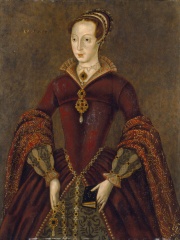
5. Lady Jane Grey (1537 - 1554)
With an HPI of 88.92, Lady Jane Grey is the 5th most famous British Nobleman. Her biography has been translated into 77 different languages.
Lady Jane Grey (1536/1537 – 12 February 1554), also known as Lady Jane Dudley after her marriage, and nicknamed as the "Nine Days Queen", was an English noblewoman who was proclaimed Queen of England and Ireland on 10 July 1553 and reigned until she was deposed by the Privy Council of England, which proclaimed her cousin, Mary I, as the new Queen on 19 July. Jane was later beheaded for high treason. Jane was the great-granddaughter of Henry VII (through his youngest daughter, Mary Tudor), the grandniece of Henry VIII, and the first cousin once removed of Edward VI, Mary I, and Elizabeth I. Under the will of Henry VIII, Jane was in line to the throne after her cousins. She had a humanist education and a reputation as one of the most learned young women of her day. In May 1553, she was married to Lord Guildford Dudley, a younger son of Edward VI's chief minister, John Dudley, Duke of Northumberland. In June, the dying Edward VI wrote his will, nominating Jane and her male heirs as successors to the Crown, in part because his half-sister Mary was Catholic, whereas Jane was a committed Protestant and would support the reformed Church of England, whose foundation Edward laid. The will removed both of his half-sisters, Mary and Elizabeth, from the line of succession because of their illegitimacy, subverting their lawful claims under the Third Succession Act. Through the Duke of Northumberland, Edward's letters patent in favour of Jane were signed by the entire privy council, bishops, and other notables. After Edward's death, Jane was proclaimed queen on 10 July 1553 and awaited coronation in the Tower of London. Support for Mary grew rapidly, and most of Jane's supporters abandoned her. The Privy Council suddenly changed sides and proclaimed Mary as queen on 19 July, deposing Jane. Her primary supporter, her father-in-law, the Duke of Northumberland, was accused of treason and executed less than a month later. Jane was held prisoner in the Tower, and in November 1553, she was also convicted of treason, which carried a sentence of death. Mary initially spared her life, but Jane soon became viewed as a threat to the Crown when her father, Henry Grey, 1st Duke of Suffolk, became involved with Wyatt's rebellion against Mary's intention to marry Philip of Spain. Jane and her husband were both executed by beheading on 12 February 1554 at the Tower of London. At the time of her execution, Jane was either 16 or 17 years old.

6. Camilla, Duchess of Cornwall (b. 1947)
With an HPI of 84.73, Camilla, Duchess of Cornwall is the 6th most famous British Nobleman. Her biography has been translated into 75 different languages.
Camilla (born Camilla Rosemary Shand, later Parker Bowles, 17 July 1947) is Queen of the United Kingdom and 14 other Commonwealth realms as the wife of King Charles III. Camilla was raised in East Sussex and South Kensington in England and educated in England, Switzerland and France. In 1973, she married British Army officer Andrew Parker Bowles; they divorced in 1995. Camilla and Charles were romantically involved periodically, both before and during each of their first marriages. Their relationship was highly publicised in the media and attracted worldwide scrutiny. In 2005, Camilla married Charles in the Windsor Guildhall, which was followed by a televised Anglican blessing at St George's Chapel in Windsor Castle. From their marriage until Charles's accession, she was known as the Duchess of Cornwall. On 8 September 2022, Charles became king upon the death of his mother, Queen Elizabeth II, with Camilla as queen consort. Charles and Camilla's coronation took place at Westminster Abbey on 6 May 2023. Camilla carries out public engagements representing the monarch and is the patron of numerous charities and organisations. Since 1994, she has campaigned to raise awareness of osteoporosis, which has earned her several honours and awards. She has also campaigned to raise awareness of issues such as rape, sexual abuse, illiteracy, animal welfare and poverty.

7. Edward the Black Prince (1330 - 1376)
With an HPI of 83.11, Edward the Black Prince is the 7th most famous British Nobleman. His biography has been translated into 60 different languages.
Edward of Woodstock (15 June 1330 – 8 June 1376), known as the Black Prince, was the eldest son and heir apparent of King Edward III of England. He died before his father and so his son, Richard II, succeeded to the throne instead. Nevertheless, Edward earned distinction as one of the most successful English commanders during the Hundred Years' War, being regarded by his English contemporaries as a model of chivalry and one of the greatest knights of his age. Edward was made Duke of Cornwall, the first English dukedom, in 1337. He was guardian of the kingdom in his father's absence in 1338, 1340, and 1342. He was created Prince of Wales in 1343 and knighted by his father at La Hougue in 1346. In 1346, Prince Edward commanded the vanguard at the Battle of Crécy, his father intentionally leaving him to win the battle. He took part in Edward III's 1349 Calais expedition. In 1355, he was appointed the king's lieutenant in Gascony and ordered to lead an army into Aquitaine on a chevauchée, during which he pillaged Avignonet and Castelnaudary, sacked Carcassonne, and plundered Narbonne. In 1356, on another chevauchée, he ravaged Auvergne, Limousin, and Berry but failed to take Bourges. The forces of King John II of France met Edward's armies near the city of Poitiers. After negotiations between the two sides broke down, the Anglo-Gascon forces under Edward routed the French army and captured King John at the Battle of Poitiers. In 1360, he negotiated the Treaty of Brétigny. He was created Prince of Aquitaine and Gascony in 1362, but his suzerainty was not recognised by the lord of Albret or other Gascon nobles. He was directed by his father to forbid the marauding raids of the English and Gascon free companies in 1364. He entered into an agreement with Kings Peter of Castile and Charles II of Navarre, by which Peter covenanted to mortgage Castro Urdiales and the province of Biscay to him as security for a loan; in 1366 a passage was secured through Navarre. In 1367, he received a letter of defiance from Henry of Trastámara, Peter's half-brother and rival. The same year, after an obstinate conflict, he defeated Henry at the Battle of Nájera. However, after a wait of several months during which he failed to obtain either the province of Biscay or liquidation of the debt from Don Pedro, he returned to Aquitaine. Edward persuaded the estates of Aquitaine to allow him a hearth tax of ten sous for five years in 1368, thereby alienating the lord of Albret and other nobles. Prince Edward returned to England in 1371 and resigned the principality of Aquitaine and Gascony in 1372. He led the Commons in their attack upon the Lancastrian administration in 1376. He died in 1376 of dysentery and was buried in Canterbury Cathedral, where his surcoat, helmet, shield, and gauntlets are still preserved.

8. Harold Harefoot (1016 - 1040)
With an HPI of 82.54, Harold Harefoot is the 8th most famous British Nobleman. His biography has been translated into 55 different languages.
Harold I (died 17 March 1040), commonly known as Harold Harefoot, was King of England from 1037 to 1040. His nickname "Harefoot" is first recorded as "Harefoh" or "Harefah" in the twelfth century in the history of Ely Abbey, and according to some late medieval chroniclers it meant that he was "fleet of foot". The son of Cnut the Great and Ælfgifu of Northampton, Harold was elected regent of England following the death of his father in 1035. He initially ruled England in place of his brother Harthacnut, who was stuck in Denmark because of a rebellion in Norway that had ousted their brother Svein. Although Harold had wished to be crowned king since 1035, Æthelnoth, Archbishop of Canterbury, refused to do so. It was not until 1037 that Harold, supported by earl Leofric and many others, was officially proclaimed king. The same year, Harold's two step-brothers Edward and Alfred returned to England with a considerable military force. Alfred was captured by Earl Godwin, who had him seized and delivered to an escort of men loyal to Harefoot. While en route to Ely, he was blinded and soon after died of his wounds. Harold died in 1040, having ruled just five years; his half-brother Harthacnut soon returned and took hold of the kingdom peacefully. Harold was originally buried in Westminster, but Harthacnut had his body dragged up and thrown into a fen adjacent to the river Thames, from where it was reportedly recovered by a fisherman and eventually reburied in a Danish cemetery in London.

9. Empress Matilda (1102 - 1167)
With an HPI of 82.35, Empress Matilda is the 9th most famous British Nobleman. Her biography has been translated into 64 different languages.
Empress Matilda (c. 7 February 1102 – 10 September 1167), also known as Empress Maud, was Holy Roman Empress as the consort of Emperor Henry V from 1110 until his death in 1125, and was subsequently a claimant to the English throne during the civil war known as the Anarchy. Following the death of her father, King Henry I of England, she asserted her right to the English throne as his only surviving legitimate child and styled herself Lady of the English. However, her cousin Stephen of Blois was crowned king in her place. Matilda was the only daughter and eldest child of Henry I, king of England and ruler of Normandy, by his first wife Matilda of Scotland, to survive to adulthood. As a child, she went to Germany where she was married to the future Henry V. She travelled with the emperor to Italy in 1116, was controversially crowned empress in St Peter's Basilica, and acted as the imperial regent in Italy. Matilda and Henry V had no children, and when he died in 1125, the imperial crown was claimed by his rival Lothair of Supplinburg. Matilda's younger and only full brother, William Adelin, died in the White Ship disaster of 1120, leaving Matilda's father and realm facing a potential succession crisis. Upon her widowhood in the Holy Roman Empire, Matilda was recalled to Normandy by her father, who arranged for her to marry Geoffrey of Anjou to form an alliance to protect his southern borders in France. Henry I had no further legitimate children and nominated Matilda as his heir, making his court swear an oath of loyalty to her and her successors, but the decision was not popular in his Anglo-Norman court. Henry died in 1135, but Matilda and Geoffrey faced opposition from the barons. Henry's nephew and successor, King Stephen, enjoyed the backing of the English Church. Stephen took steps to solidify his new regime but faced threats both from neighbouring powers and from opponents within his kingdom. In 1139, Matilda crossed to England to take the kingdom by force, supported by her half-brother Robert, Earl of Gloucester, and her uncle David I of Scotland, while her husband, Geoffrey, focused on conquering Normandy. Matilda's forces captured Stephen at the Battle of Lincoln in 1141, but her attempt to be crowned at Westminster Abbey collapsed in the face of bitter opposition from the London crowds. As a result of this retreat, Matilda was never formally declared Queen of England, and was instead titled "Lady of the English" (Latin: domina Anglorum). Robert was captured following the Rout of Winchester in 1141, and Matilda agreed to exchange Stephen for him. Matilda was besieged at Oxford Castle by Stephen's forces that winter, but escaped at night across the frozen River Isis (Thames) to Abingdon. The war degenerated into a stalemate, with Matilda controlling much of the south-west of England, and Stephen the south-east and the Midlands. Large parts of the rest of the country were in the hands of local, independent barons. Matilda returned to Normandy, now in the hands of her husband, in 1148, leaving their eldest son to continue the campaign in England; he was eventually declared Stephen's heir after the signing of the Treaty of Wallingford and succeeded to the throne as Henry II in 1154, forming the Angevin Empire. Matilda settled her court near Rouen and for the rest of her life concerned herself with the administration of Normandy, acting on her son's behalf when necessary. Particularly in the early years of her son's reign, she provided political advice and attempted to mediate during the Becket controversy. She worked extensively with the Church, founding Cistercian monasteries, and was known for her piety. She was buried under the high altar at Bec Abbey after her death in 1167, until much later when her tomb was moved to Rouen Cathedral.
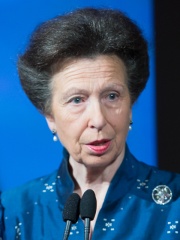
10. Anne, Princess Royal (b. 1950)
With an HPI of 82.10, Anne, Princess Royal is the 10th most famous British Nobleman. Her biography has been translated into 62 different languages.
Anne, Princess Royal (Anne Elizabeth Alice Louise; born 15 August 1950), is a member of the British royal family. She is the second child and only daughter of Queen Elizabeth II and Prince Philip, Duke of Edinburgh, and the only sister of King Charles III. Anne was born third in the line of succession to the British throne and is eighteenth as of 2026. She has held the title of Princess Royal since 1987. Born at Clarence House, Anne was educated at Benenden School and began undertaking royal duties upon reaching adulthood. A respected equestrian, she won one gold medal in 1971 and two silver medals in 1975 at the European Eventing Championships, and in 1976 became the first member of the British royal family to compete in the Olympic Games. She has been a member of the International Olympic Committee since 1988. Anne performs official duties and engagements on behalf of the monarch and is patron or president of more than 300 organisations, including WISE, Riders for Health, Carers Trust, and Transaid. Her charitable work focuses on sport, science, disability, and health in developing countries. She has been associated with Save the Children for more than fifty years and has visited many of its projects. Anne married Captain Mark Phillips in 1973; they separated in 1989 and divorced in 1992. They have two children, Peter Phillips and Zara Tindall. Later in 1992, she married Commander (now Vice admiral) Sir Timothy Laurence, whom she met while he served as her mother's equerry.
People
Pantheon has 93 people classified as British noblemen born between 575 and 2019. Of these 93, 26 (27.96%) of them are still alive today. The most famous living British noblemen include Charles, Prince of Wales, Camilla, Duchess of Cornwall, and Anne, Princess Royal. The most famous deceased British noblemen include Henry VIII of England, Elizabeth II, and Edward VII. As of April 2024, 3 new British noblemen have been added to Pantheon including Lord Nicholas Windsor, Alexander Windsor, Earl of Ulster, and Lady Davina Windsor.
Living British Noblemen
Go to all RankingsCharles, Prince of Wales
1948 - Present
HPI: 91.70
Camilla, Duchess of Cornwall
1947 - Present
HPI: 84.73
Anne, Princess Royal
1950 - Present
HPI: 82.10
Prince Edward, Earl of Wessex
1964 - Present
HPI: 75.82
Princess Alexandra, The Honourable Lady Ogilvy
1936 - Present
HPI: 75.44
Prince William, Duke of Cambridge
1982 - Present
HPI: 74.29
Prince Andrew, Duke of York
1960 - Present
HPI: 72.16
Prince Harry, Duke of Sussex
1984 - Present
HPI: 71.81
Prince Michael of Kent
1942 - Present
HPI: 65.92
Princess Beatrice of York
1988 - Present
HPI: 62.66
Princess Eugenie of York
1990 - Present
HPI: 60.75
Lady Sarah Chatto
1964 - Present
HPI: 58.21
Deceased British Noblemen
Go to all RankingsHenry VIII of England
1491 - 1547
HPI: 94.65
Elizabeth II
1926 - 2022
HPI: 89.72
Edward VII
1841 - 1910
HPI: 89.68
Lady Jane Grey
1537 - 1554
HPI: 88.92
Edward the Black Prince
1330 - 1376
HPI: 83.11
Harold Harefoot
1016 - 1040
HPI: 82.54
Empress Matilda
1102 - 1167
HPI: 82.35
Princess Alice of Battenberg
1885 - 1969
HPI: 81.55
Queen Elizabeth The Queen Mother
1900 - 2002
HPI: 81.23
Diana, Princess of Wales
1961 - 1997
HPI: 79.55
Princess Beatrice of the United Kingdom
1857 - 1944
HPI: 79.13
Princess Margaret, Countess of Snowdon
1930 - 2002
HPI: 78.94
Newly Added British Noblemen (2025)
Go to all RankingsLord Nicholas Windsor
1970 - Present
HPI: 48.51
Alexander Windsor, Earl of Ulster
1974 - Present
HPI: 45.40
Lady Davina Windsor
1977 - Present
HPI: 40.32
Overlapping Lives
Which Noblemen were alive at the same time? This visualization shows the lifespans of the 25 most globally memorable Noblemen since 1700.

